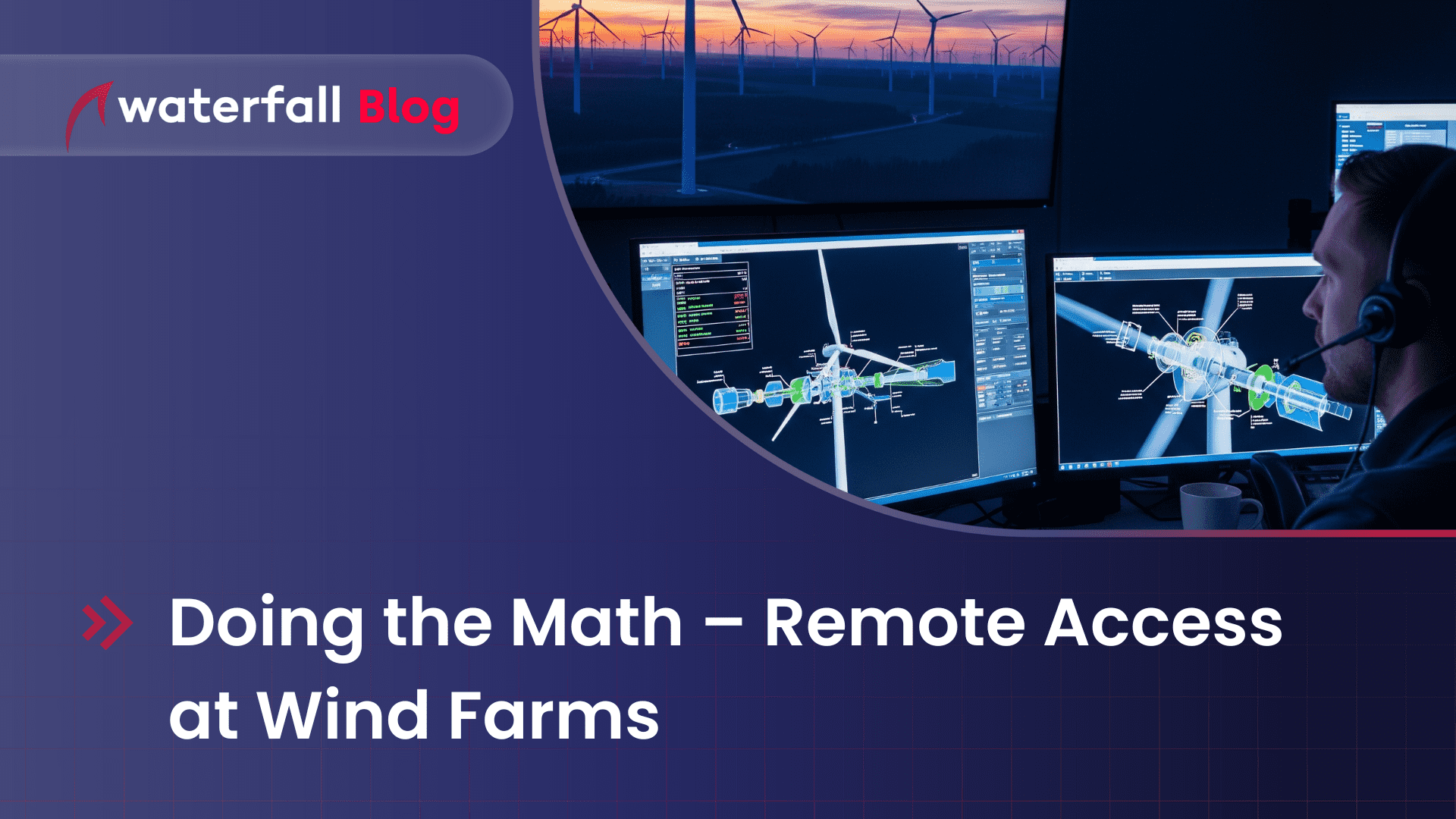By Andrew Ginter, VP Industrial Security, Waterfall Security
Stuff wears out. Friction is the enemy of moving parts and rotating equipment. Vibration is the symptom of wear – in conventional generators and wind farms both. But the math is different in wind farms.
In a conventional generator – coal, natural gas, or hydro – you have a turbine that turns steam pressure, chemical energy, or water pressure respectively into rotational energy. The rotating turbine turns a generator, which produces power. The generator rotates as well, but it is the turbine that suffers most of the friction and most of the wear.
So we monitor the turbines for vibrational anomalies, gas turbines we also monitor for heat anomalies. We send a lot of detailed information about these symptoms to the turbine manufacturer, the manufacturer diagnoses the wear and about once a quarter remotes into the turbine management system to adjust the turbine. These adjustments increase runtime between maintenance outages – one way to minimizing the cost of maintaining the turbines.
There is a similar situation for wind farms. There is enormous stress on the bearings and other elements of a wind turbine. These things wear and need adjustment from time to time. So what’s the difference?
The math differs. A large power plant has maybe half a dozen steam or gas or hydro turbines. If the manufacturer remotes in once a quarter for an hour-long adjustment each time, that’s 6 hours of remote access per quarter. Many power plants use unidirectional remote screen view for this – extremely secure attended remote access. An engineer at the plant is on the phone with the turbine support technician, the engineer takes advice, asks questions and moves the mouse on the turbine management system. This cost is acceptable – 6 hours a quarter. The site engineer has the added benefit of supervising and understanding what the vendor technician has done to the site’s 6 very large, very expensive turbines.
The difference is math – a large wind farm has 300 turbines. Each of these smaller turbines wears out roughly as fast as the conventional turbines. Each of these wind turbines needs adjustment, maybe once a quarter as well. That’s roughly 300 hours of remote access sessions per year, adjusting the turbines.
It gets worse. Wind turbine technology is not as mature as 50-year-old conventional turbine technology. In older wind farms, there may be 5-6 vendors involved in supplying different kinds of technology in each turbine, and each of them need to log into each turbine control system roughly once per quarter. That’s 1500-1800 hours of remote access sessions per quarter. Back of the envelope, there are 13 weeks in a quarter and so 13 x 5 x 8 = 520 working hours per quarter, give or take holidays. In these older, larger wind farms, therefore, we’re looking at 3-4 vendor remote access sessions going on simultaneously, to 3-4 different turbines, every working hour of the quarter.
But turbine technology is improving. In modern wind farms, there may be only a couple of vendors, each logging into each turbine roughly once per quarter, to adjust the turbines to minimize wear. That might only be 1 or 2 vendors logged in on average, every working hour of every working day. Either way, attended unidirectional remote access, no matter how amazingly secure, is impractical. The math doesn’t work.
Renewables are the future of power generation – so we must solve this problem. This math is why Waterfall invented HERA – hardware-enforced remote access – hardware-enforced unattended remote access. Vendors can be logged in constantly, across the Internet, using technology that is much more secure than “secure” software remote access (SRA).
Remote access for renewables is the topic the inventors of HERA will discuss on Waterfall’s next webinar. Join Lior Frenkel, CEO and Co-Founder of Waterfall, with me Andrew Ginter, VP Industrial Security, to look at what’s needed for strong remote access to renewables,and how Waterfall is responding to this need with something brand new – a kind of technology the world has never seen before. We look at how customers showed us what they needed, what we built (HERA), how it works, and how it is dramatically more secure than software remote access / SRA
We invite you to join us. Click here to be part of the hardware-enforced future of OT security in renewable generation.
